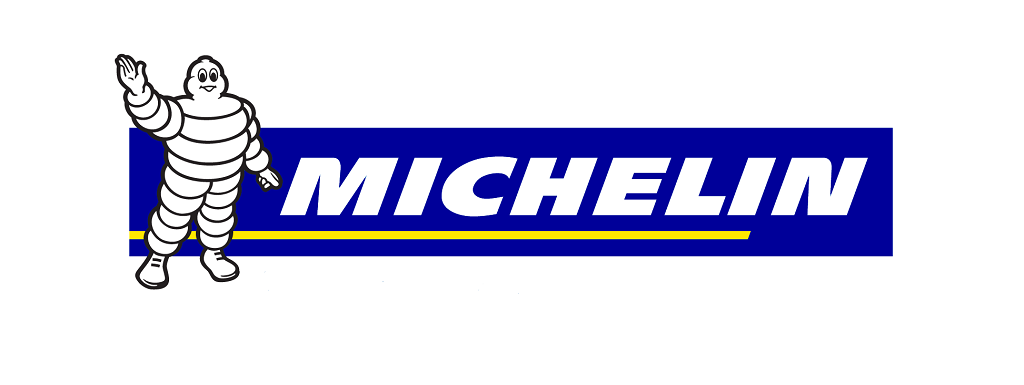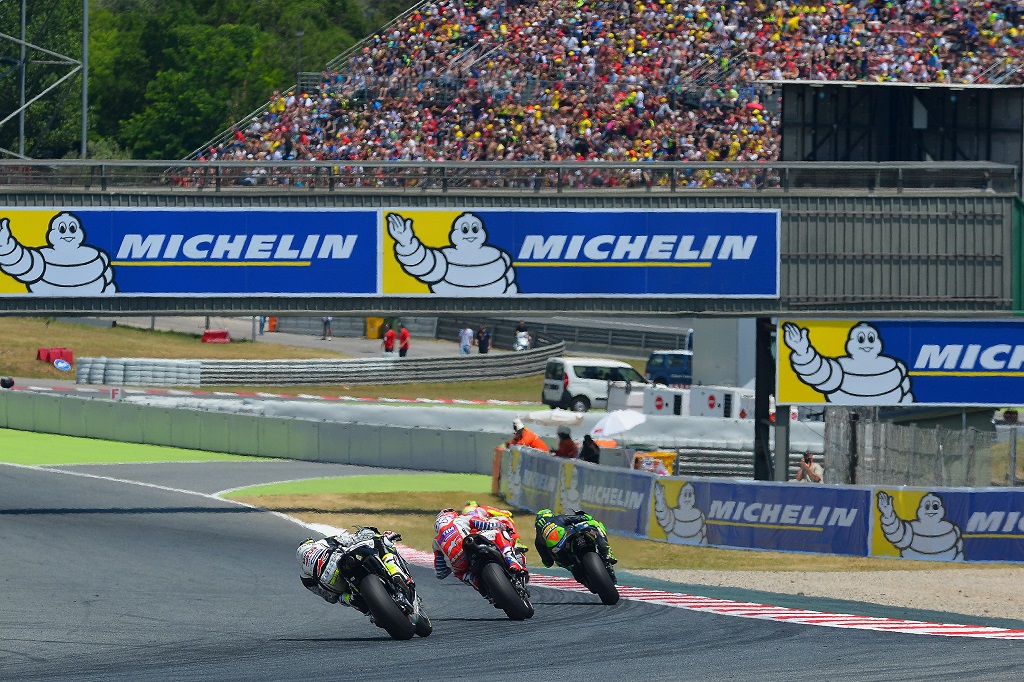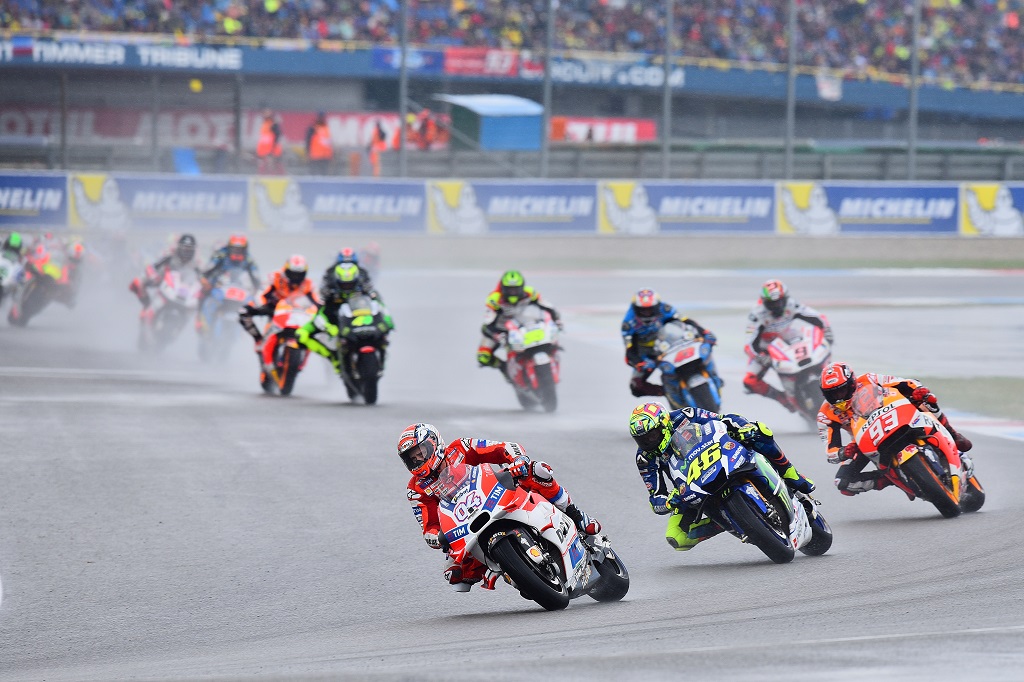Michelin has completed the three pre-season MotoGP™ tests and now the French tyre company has its sights firmly set on the first race of the year at Losail in Qatar later this month where several rule changes and new technologies will be introduced.
Following Michelin’s 2016 re-introduction into MotoGP after a seven-year absence, the Clermont Ferrand based tyre specialists gathered important data from its first-year back and this has led to a new profile of front MICHELIN Power Slick being developed for the forthcoming season. This tyre was first used as a prototype at the final race of 2016 at Valencia with impressive results, and the information collected from that event enabled the Michelin technicians to work on the tyre through the winter, and at the pre-season tests, to create a version that the riders have been very impressed with. This allied to a rear tyre that gives more traction and allows the riders to get better drive, demonstrates that Michelin is pushing ahead with constant innovations as it strives to continually create the best racing tyres for MotoGP.
These latest tyres will not be the only modifications at the first round, as a rule change will see Michelin supplying three slick tyre specifications for both the front and rear wheels – two was the minimum requirement in 2016. This will give the riders a greater scope of tyre selections and will again hopefully lead to more choices and continue with different riders using different tyres and creating a competition effect within the single tyre rule. Another change will see the intermediate tyres no longer being used. The company’s development of the MICHELIN Power Rain tyres – which has seen the harder compound show good durability in drying conditions – has led to the decision to remove the intermediates from this year’s allocation. A further amendment to the rules will also see the two riders that qualify for QP2, after going through QP1, being given an extra rear soft slick tyre to enable them to use the softest compound in the second qualifying session if they chose to.
One of the biggest changes for 2017 will see the introduction of the ‘Tyre Detection System’. This will operate using wireless technology and will assist in identifying which tyre each rider is using. The system will operate through every wheel having a Tyre Air Pressure Sensor (TAPS) fitted to it with a unique ID. All tyres will then have a unique bar code which will be matched to TAPS via scanning, giving confirmation of which tyre is fitted to which bike. A transmitter in the TAPS emits a signal which is then read by the bike’s transponder and then the unique ID is transmitted to and received by the timing receivers around the circuit, this is then in turn immediately communicated to the organizer. This information will then be supplied directly by Dorna to the TV companies/timing boards for broadcast, so the viewers will know straight away which tyre each rider is using. This will enable up-to-the-minute information to be available and will work alongside the visible identification of the colored bands on each tyre.
Michelin is excited about the changes as the new season approaches and is in a determined mood to take its MotoGP tyre development on to further heights as it aims to give racers the tyres they need to supply fans with exciting and competitive racing over the 18-race campaign.



